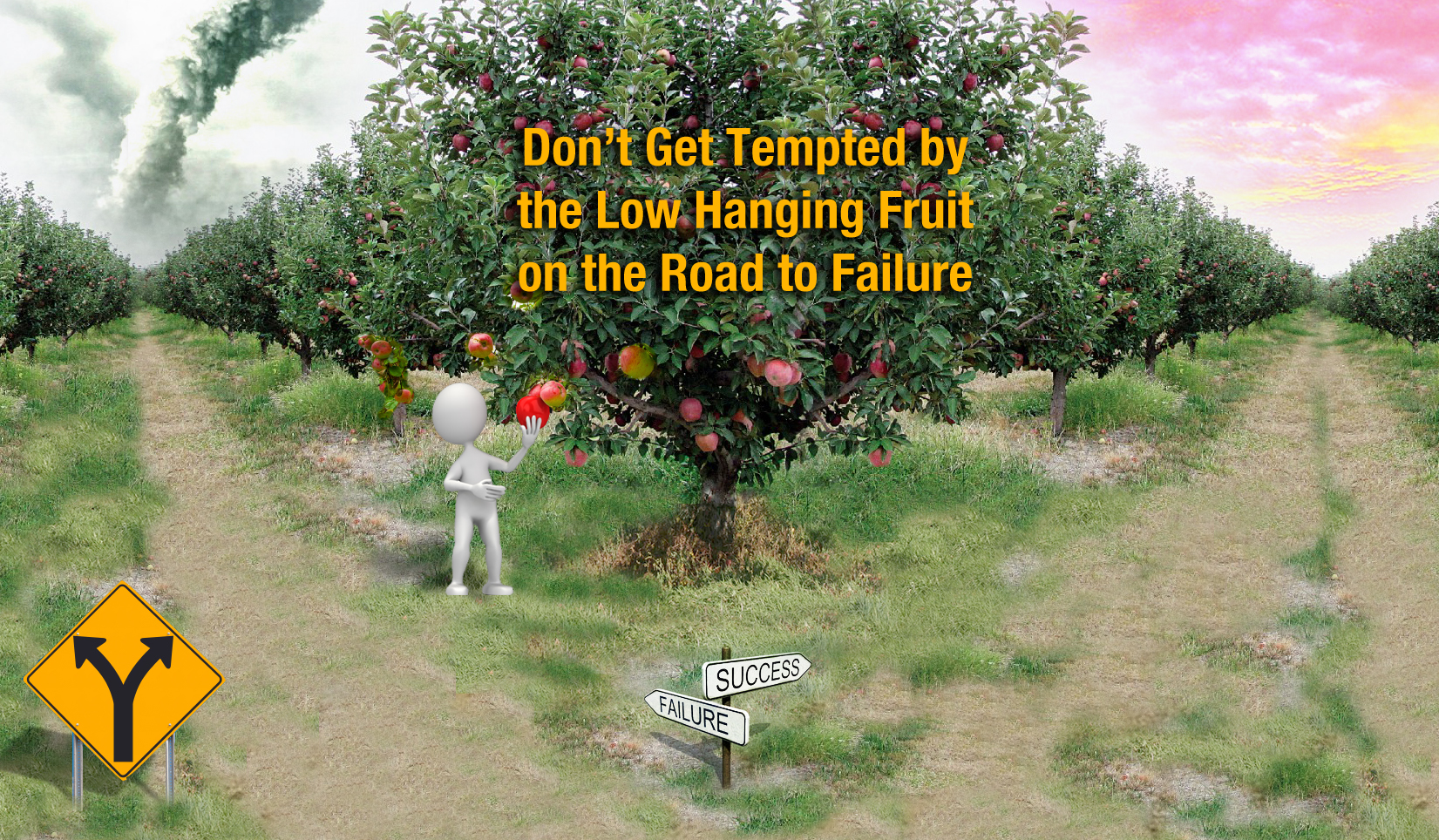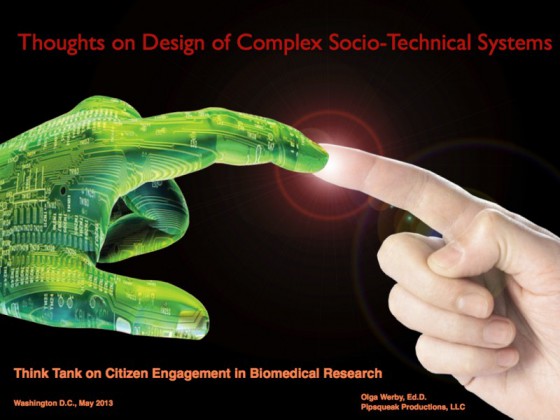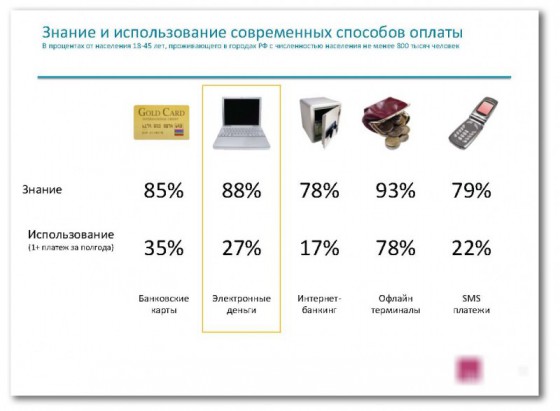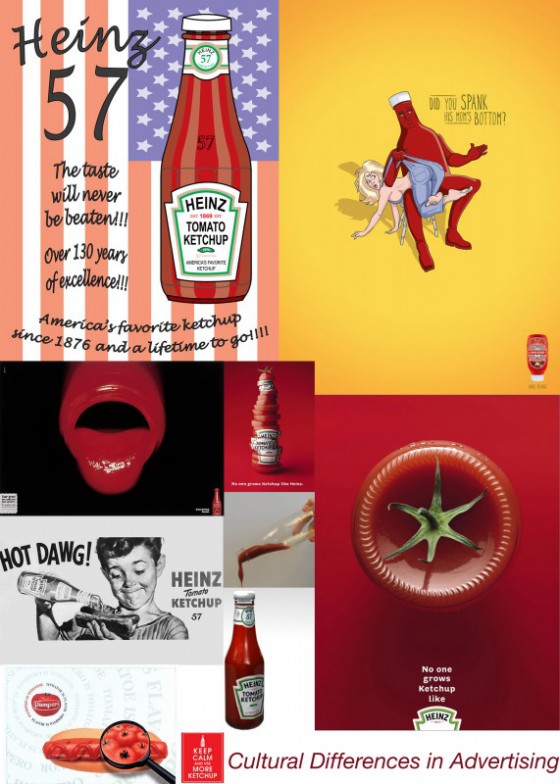
NIH think tank on the future of citizen participation in biomedical research came to a closure on Friday night, and I had many hours in the airport and plane to think about all that was discussed. In the next few days, rather than writing a longish piece of my impressions of the meeting, I hope to get to each of the items that I feel I didn’t get a chance to fully explore while in Washington D.C. in a series of small posts. Low Hanging Fruit There is a strong temptation in any project to achieve success early (and often). The expression Low Hanging Fruit refers to relatively easy to accomplish tasks. But in the desire to get things done, it is easy to lose track of the overarching strategy — the main purpose of the enterprise. By chasing the Low Hanging Fruit, it is easy to get distracted and end up on the wrong path. Two Different Roads We’ve discussed two visions for the future: more of the same and a radical cultural shift. We visualized the first path as “turning the knob to 11” (aka Spinal Tap). More of the same (but with higher intensity) has many tempting…











